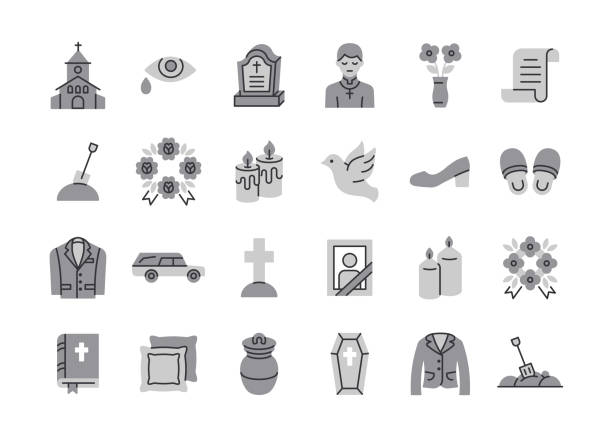As the cost of traditional burial services continues to increase in the United States, cremation has become a popular alternative. However, many people are not aware that a casket is not necessary for the cremation process. Instead, a container made of combustible materials is required.
This article explores the various options available for cremation containers, including eco-friendly choices, and highlights the cost savings associated with using a container rather than a traditional casket for cremation. The rising popularity of cremation is a reflection of the changing attitudes towards death and burial in the United States.
In the past, traditional burials with elaborate caskets and headstones were the norm. However, as people become more conscious of the environmental impact of traditional burials and seek more affordable options, cremation has emerged as a viable alternative. This article aims to provide readers with a comprehensive understanding of cremation containers, their benefits, and the cost savings associated with their use.
Cremation Container Basics
The container required for cremation is an essential element of the cremation process. This container is made of materials such as wood, bamboo, wicker, or recycled cardboard, and is necessary for the dignified handling and storage of the deceased during the process.
Crematoriums require a container that is made of combustible materials, as metal parts will not burn in the cremation chamber and can even damage burnt pieces.
Compared to traditional caskets, cremation containers are a more cost-effective option. Families can choose to rent or buy a container, depending on their budget and preference.
Renting a casket for the funeral is a cost-effective option, while buying a cremation container can be a good investment for families who want to keep the urn at home or bury it in a cemetery.
The choice of cremation container materials and the option to rent or buy make the cremation process a more flexible and affordable option for families who are looking for an alternative to traditional burials.
Options for Cremation Containers
Different materials can be used to enclose a loved one’s remains during the cremation process, offering various options for aesthetics and cost. Biodegradable options, such as bamboo, wicker, and recycled cardboard, are popular choices for those seeking an environmentally conscious option. These containers are made of combustible materials, allowing for easy cremation and not harming the environment.
Other materials, such as wood and ceramic, can also be used to create personalized urns that reflect the interests or personality of the deceased. Personalized urns offer a unique way to commemorate a loved one’s life. Some companies offer custom-made urns that can be designed to feature a particular image or symbol, while others offer urns made from materials such as glass or metal.
These personalized urns offer a way to celebrate the individuality of the person who has passed away while also providing a special place for their remains. With so many options available, families can choose a cremation container that reflects their loved one’s personality and values, while also fitting within their budget.
Benefits of Using a Cremation Container
Using a suitable container for the remains during the cremation process offers practical benefits and allows for personalization options. A cremation container is necessary to handle and store the body with dignity. While a casket is not required, a container made of combustible materials such as wood, bamboo, wicker, and recycled cardboard is needed for cremation.
Using a container for cremation can save money on expensive caskets and is also environmentally conscious. Green caskets are completely combustible and provide a more eco-friendly option. Moreover, using a suitable cremation container allows for personalization options, such as engraving or decorating the container, providing a meaningful and emotional significance to the grieving process.
In addition to the practical and personalization benefits, using a cremation container also helps reduce the environmental impact of the cremation process. Traditional caskets with metal parts are not suitable for cremation and can even damage burned pieces. Using a container made of combustible materials reduces the environmental impact of the cremation process and provides a more sustainable option.
Furthermore, choosing green caskets made of natural and biodegradable materials reduces the carbon footprint and helps preserve the environment. Overall, using a suitable cremation container not only offers practical and emotional benefits but also helps reduce the environmental impact of the cremation process.
Comparing Cremation and Burial Costs
Interestingly, the cost of burying cremated remains can be significantly lower than the cost of a traditional burial. The average cost of a burial plot for a traditional casket ranges from $525 to $5,000, while the cost of a burial for cremated remains ranges from $350 to $2,500. Additionally, cemeteries charge less for plots for urns because they require less space.
This cost comparison is especially important for those who are looking for a more cost-effective option for their loved one’s final arrangements.
Another factor to consider when comparing cremation and burial costs is the environmental impact. Traditional burials involve embalming the body, which uses toxic chemicals that can leach into the soil.
Cremation, on the other hand, has a much smaller environmental impact. While the process does require the use of energy, many crematoriums are making efforts to become more eco-friendly by using renewable energy sources. Additionally, there are now many options for eco-friendly cremation containers, such as those made from recycled cardboard or biodegradable materials.
Overall, choosing cremation and an environmentally friendly container can be a more sustainable and cost-effective option for those looking to honor their loved ones while also being conscious of their impact on the environment.

